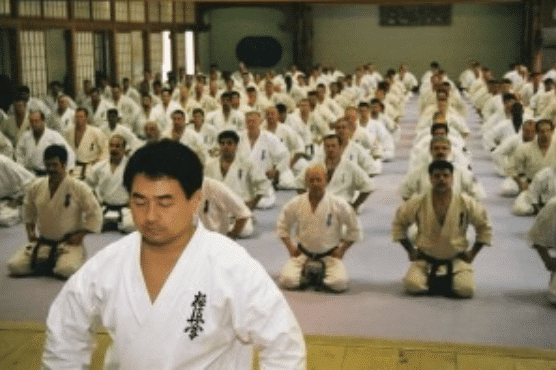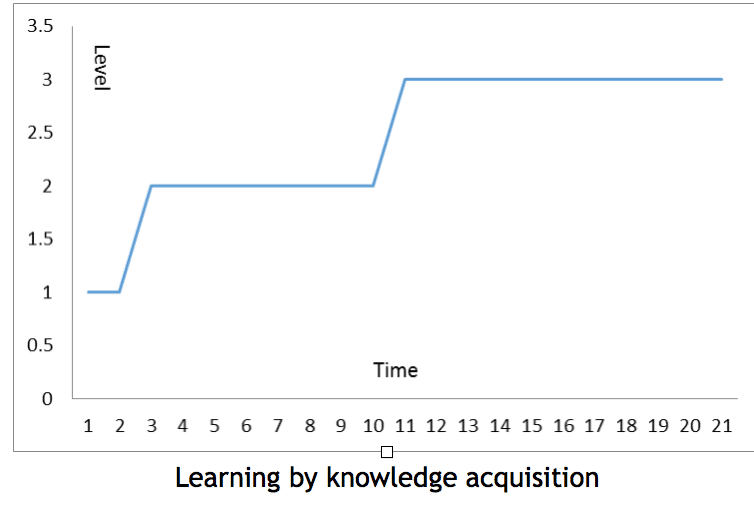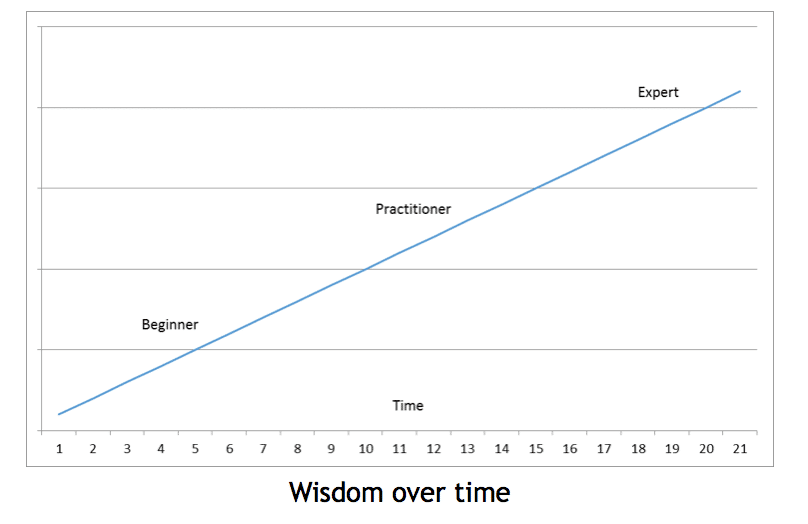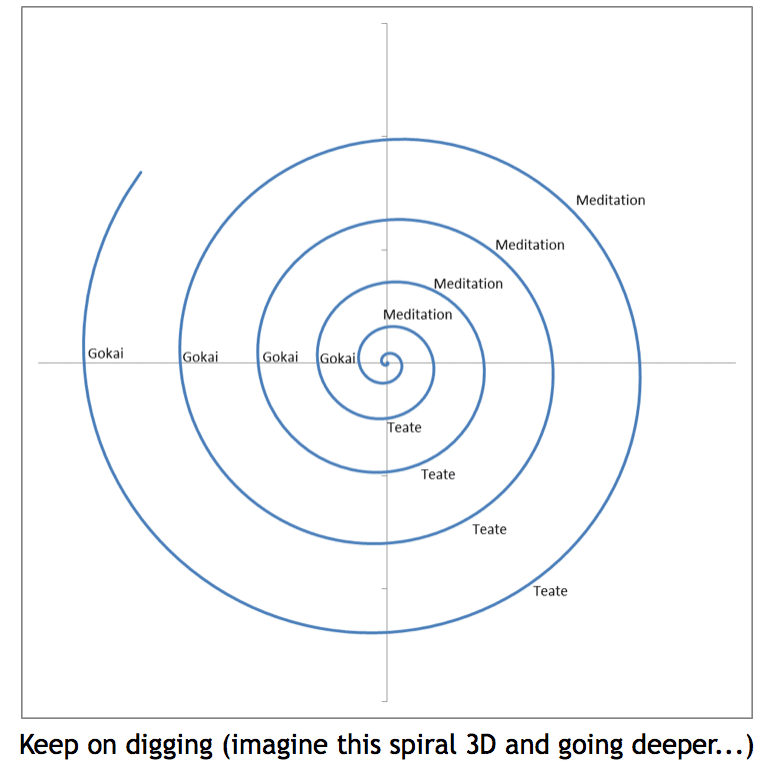
Shokei Matsui, Kyokushin Shugyo, and the hyakunin kumite.
Early on in my Reiki days, I understood Reiki to be something more akin to a technique; a tool for healing a toothache or a bellyache in a pinch. Later on, I realized how such a view as inherently limiting and with work, I learned how to see, live, and embody Reiki from a much broader perspective.
One of the most important lessons in this Reiki practice paradigm shift is not necessarily what you are doing, but how you approach whatever you are doing; living from the kokoro (heart/mind) for instance, versus speculating from the head as per our habitual conditioning in this modern era.
As usual, what I’m proposing isn’t some sort of so-called “final answer” on all things Reiki. I’m just sharing my current view, however clear or clouded it may be, in order to hopefully encourage awareness and invite perspective to our individual practice(s) and experiences.
Earlier this year (2016), I was introduced to a new paradigm with which to understand Reiki as Hayashi Sensei and Takata Sensei taught it, namely Usui Shiki Reiki Ryoho as a Yang Shen practice.
Yang Shen (養生) is a term from traditional Chinese medical theory that traditionally emphasizes:
“…activities used to enhance health and achieve longevity by various methods and comprehensive techniques, such as cultivating spirit, adjusting diet, exercising the body, regulating the moods, moderating sexual life and adapting to the climate” (Chen 2011)
Yang Shen is generally about methods of promoting and maintaining health as opposed to our modern approach of combating disease. To understand the scope of this approach to practice, let’s take a look at a few definitions:
“The Chinese word “Yang” (養) means to nurture, take care of, and nourish; “Sheng” ( 生) means life, birth, and vitality. Together “Yang Sheng” means to nurture or nourish life — fostering health and well-being by nurturing body, mind and spirit in harmony with the natural rhythms, and with universal laws” (Chen 2011)
Ordinarily, this would seem very simple, cut and dry. Basically live in accordance with specific principles to encourage and maintain optimal health. However, it seems Yang Shen is more than just regimented application of technique:
“It is also a mind-body health activity achieved through material and spiritual unification.” (Chen 2011)
Considering the above definitions, understanding Reiki Ryoho as a form of Japanese Yang Shen practice is very plausible, especially if we reflect on information in the Usui Reiki Hikkei, a manual written for Usui Reiki Ryoho Gakkai members. An interview section in this manual contains the following words which are attributed to Mikao Usui:
“My Reiki Ryoho is an original method based on intuitive power in the universe. By this power, the body gets healthy and enhances happiness of life and peaceful mind.” (Rivard)
In addition to the above, there is evidence Mrs. Takata taught and lived Reiki beyond the common misconception of hands-on healing (only) and that her practice was more in line with this Yang Shen perspective, as indicated by her cooking recipes for healing, injunctions against the modern (American) diet, methods of practice (early morning distance treatments), and other activities.
Reframing my understanding of Reiki Ryoho as a Japanese form of Yang Shen Dao (養生之道) was/is thought-provoking to say the least. This approach allows me yet another way to understand Reiki as a way of life rather than a simple technique.
However, upon further contemplation on this theory of Reiki as Yang Shen, health maintenance by lifestyle, I realized even this scope of practice was “not enough for me.”
Going back to the Hikkei, when asked in the same interview section “How does Usui Reiki Ryoho work?” again in words attributed to Usui, he mentions how he “accidentally realized” he had healing power “during fasting”.
According to the memorial stone erected by the Gakkai in Usui’s honor and memory, it states this aforementioned fast on Mount Kurama was part of Usui’s 21 day fast, a type of “shugyo”.
Traditionally, Shugyo (修業) or (修行) is a term for a very intense form of, or disciplined approach toward, an ego transcending spiritual practice with varying descriptions and/or definitions including:
- Practice; cultivation
- To perform, practice, cultivate; to apply oneself to yoga/meditation practice
- To endeavor
- To keep the precepts; be religious, or pious
- Penance, austerities (Digital Dictionary of Buddhism 2007)
- pursuit of knowledge; studying; learning; training; completing a course
- ascetic practices
- Sādhanā
(jisho.org)
Seeing how that’s a bit abstract and academic, let’s consider what Shugyo means in another way. For this I’d like to reflect on Shugyo as a state of mind as well as Shugyo as an education model.
While typically translated (flatly) as ascetic practice, Shugyo essentially means deep, committed training of the core of your awareness (kokoro) in pursuit of deeper levels of awareness though the refinement of a skill or ability. (Grové)
In my experience, the most defining trait of Shugyo is the level of intensity. For example, where a “normal” practitioner of martial arts may devote an hour or so to training and leave their mind and technique in the dojo, a Shugyosha would train their Budo at all times and train especially hard in the dojo.
Essentially, Shugyosha never let up the slack and are fully devoted to improving their entire being through the method of their choosing.
A great example of Shugyo in Budo (martial ways) is the Hyakunin Kumite in Kyokushin Karate; 100 consecutive rounds of sparring of opponents of similar or higher rank with no break.
In this way, nearly anything can be Shugyo; everything from flower arrangement to martial practice to calligraphy, healing practice, etc. As long as the mind is determined and directed correctly with enthusiastic intent, we can call it Shugyo.
With regard to Reiki, we can understand Usui’s Anshin Ritsumei (enlightenment experience), wisdom, and the resulting teachings as all a result of his intense practice – Shugyo. This is reflected in his teachings and hidden in plain sight within Usui’s precepts as well as the method of practice he intended for followers:
- Kyo Dake Wa (Just for today)
Practice this daily
- Gyo hage me (Work hard)
Again here we have Gyo (業) this time advising we endeavor intensely
- Asa yuu gassho shite (Morning Evening Gassho do)
Not just daily, but each morning and evening
- Shin Shin Kaizen (Heart/Mind Body improve)
Again here we have Kokoro/Shin (心 – Heart/Mind/spirit) and Shin (身 – Body/Oneself/Main Part)
Taking a break from all the definitions for a moment, simply stated, the most important part of this rant is hopefully highlighting possible differences in some approaches to Reiki practice; a “technical” approach, a “lifestyle” (Yang Shen) approach, and “seeker” (Shugyo) approach.
Now on to education models….if you haven’t clicked away by now…^_^
With the basic (beginner’s) technical approach one would consider learning as knowledge acquisition. This is the accelerated seminar approach where we memorize facts but are rarely given time to learn how to apply, adapt, and/or experience. We plot progress as level of acquired facts over time and mistakenly understand recitation of wisdom as actual wisdom.

With the Yang Shen approach, one would consider practice as daily health cultivation with progress moving in an almost linear way in order to maintain the current balance and equanimity. Here we keep digging over time understanding growth and wisdom as a result of steady work over time.

With the Shugyo approach, one continually digs, again and again, uncovering the depths beneath the surface, with an aim toward an ego-transcending awakening for the benefit of all. This approach is very much dependent on your efforts; time and accumulation of facts are secondary at best (although you always need to start somewhere ^_^).

There are many reasons to believe Usui taught a method of spiritual practice stemming from his intensive Shugyo that supported an individual’s health while aiming at developing an individual’s realization of anshin ritsumei (安身立命 – permanent peace of mind), based off his own experience.
The methods and tools in the Chuden and Okuden levels of the system are direct examples of this theory; the tools are clearly spiritual methods and their definitions / use are even further indicative of their origin in deep spiritual awareness.
This is further supported in Reiki Ryoho no Shiori, another version of the Gakkai’s handbook. Here the sentiment of hard work is echoed time and again though teachings attributed to Usui:
“One of the most strict rules which he taught us is that your spirit as a small universe has to be always united with the spiritual power of the whole universe as one. In other words, you lie in the universe (God) and the universe lies in you. Moreover, if you hold this truth in yourself, depending the level of your training, you can become a part of the whole universe and have a definite and unlimited power against the nature, which is what humans should be in the first place”
However, like any good teacher, his teachings were modified for his audience.
In this light, I can see a clear line from Usui’s Shugyo methods and teachings down through the filter of Hayashi’s Asian medical paradigm its eventual culmination in a solid and practical Yang Shen practice imparted though Takata.
Usui Reiki Ryoho as Yang Shen and Usui Reiki Ryoho as Shugyo are not mutually exclusive. In all outward appearances these could be perceived as the exact same thing. However, of the slight distinctions one could make, I believe the intensity and goal of one’s practice to be the determining factor.
Stated simply, the difference between Reiki as Yang Shen and Reiki as Shugyo depend on the practitioner’s intensity of practice and overall intent; health maintenance or deeper awareness of the universal nature of/in all things.
None of the above approaches are “better” or “worse” in abstract. In all truth, I don’t believe all approaches are suitable to all people in all situations. Once again, this is why teaching to the audience is very important; each approach is best suited to the individual and whatever they aim to accomplish.
For example, only a very small amount of Taekwondo students have Olympic dreams (none of my current students), while many others are simply content with working up a good sweat and keeping their body healthy.
Similarly, there’s nothing inherently wrong with Reiki as a technique. That said, the system impacted my life much more fully and intensely when I considered another way of thinking. So much in fact, that I decided to write this seven page rant and hopefully share it with someone who may have cared to read this far ;-p.
In summary, wherever you are in your Way, keep digging deeply.
Work hard and learn to embody the Universe. Share your wisdom in your daily interactions with honesty, gratitude, and compassion.
References
Chen, K. W., MPH, PH.D. (2011). What Is Yang Sheng. Retrieved June 06, 2016, from http://yang-sheng.com/?page_id=55
修業. (2006, August 2). Retrieved June 7, 2016, from http://www.buddhism-dict.net/cgi-bin/xpr-ddb.pl?q=修業
安身立命. (2007, September 4). Retrieved June 6, 2016, from http://www.buddhism-dict.net/cgi-bin/xpr-ddb.pl?5b.xml id(‘b5b89-5fc3-7acb-547d’)
修行. (2014, April 30). Retrieved June 7, 2016, from http://www.buddhism-dict.net/cgi-bin/xpr-ddb.pl?q=修行
Grové, T. (n.d.). What is Shugyo? Retrieved June 07, 2016, from http://www.lion-gv.com/v08/shugyo/html/what_is_shugyo.html
Jisho. (n.d.). Retrieved June 07, 2016, from http://jisho.org/word/修行
Kazuwa, T. (n.d.). Reiki Ryoho no Shiori [PDF].
Explanation of Instruction For the Public (R. Rivard, Trans.). (n.d.). Retrieved June 06, 2016, from http://www.threshold.ca/reiki/URH_Explanation.html
Words attributed to Mikao Usui provided via Mrs. Kimiko Koyama, former president of the Usui Reiki Ryoho Gakkai and translated by Richard Rivard
Jisho. (n.d.). Retrieved June 07, 2016, from http://jisho.org/search/修業

Comments 2
Hi, Andrew,
Thanks for this wonderful post. You have linked your practices in a beautiful way and explained it with great clarity. I will continue to dig deeper.
I have fond memories of the Cincinnati retreat and sharing chanting and Reiki practices with you.
All the best,
Susan
Hi Andrew, Love this post, such a great explanation, and a good reminder to just practice 🙂